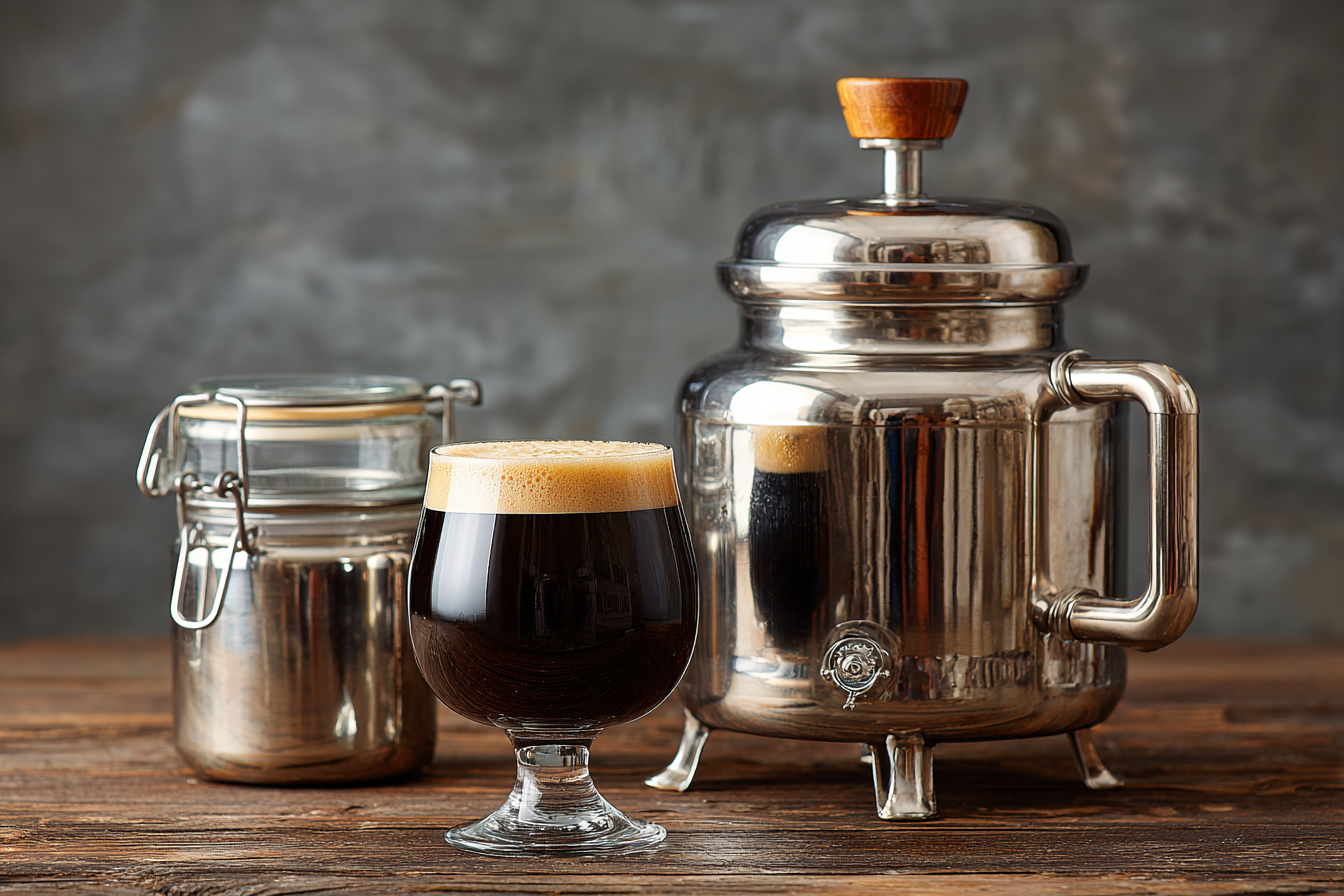Brewing your own tropical stout at home can be a rewarding experience, especially for those eager to explore bold and flavorful beer styles. Tropical stouts combine the rich, roasted malt character of classic stouts with hints of tropical fruitiness, creating a unique and satisfying beer. If you’re new to brewing and want to craft this exotic variation, you might wonder where to begin and how to avoid common pitfalls. This guide offers essential tropical stout brewing tips for beginners, helping you create your first batch with confidence and success.
Understanding Tropical Stout Basics
Before diving into the brewing process, it’s important to understand what sets tropical stouts apart from traditional stouts. Tropical stouts maintain the deep, roasted malt flavors like chocolate, coffee, and caramel that you expect from a stout but incorporate fruity, tropical notes. These are often achieved either through the choice of specialty malts or by adding specific adjuncts such as lactose, spices, or tropical fruit extracts and purees. The final beer is typically medium to full-bodied with a slightly sweeter finish compared to a dry stout.
The balance between dark malt roastiness and tropical flavors is key to crafting a tasty tropical stout. A beginner brewer should focus on understanding how different ingredients impact taste and mouthfeel, as well as the fermentation process that brings out the best in these flavors.
Selecting Beginner-Friendly Ingredients
Choosing the right ingredients is crucial in brewing your first tropical stout. You don’t need an exhaustive list of specialty malts or exotic adjuncts to start — simple, quality ingredients paired with thoughtful additions are perfect for beginners.
- Base Malt: Use a reliable base malt like pale malt or a blend of 2-row malt to provide fermentable sugars and a clean profile that allows other flavors to shine.
- Specialty Malts: Include roasted barley or chocolate malt to generate rich dark flavors typical of stouts. Avoid overpowering amounts; 10-20% specialty malt is a good starting range.
- Adjuncts for Tropical Flavor: Add lactose (milk sugar) for a creamy sweetness that complements the roasted bitterness, or small amounts of flaked oats for added body. For tropical notes, consider adding natural vanilla pods, toasted coconut, or spices such as coriander or ginger.
- Yeast: A clean, neutral ale yeast strain like American Ale yeast is beginner-friendly and allows flavors to come through clearly.
- Hops: Choose low-alpha hops to keep bitterness in check and highlight malt and adjunct flavors. English or American aroma hops such as East Kent Goldings or Willamette work well.
Step-by-Step Brewing Instructions
Once your ingredients are selected, follow these simplified steps to brew your tropical stout:
- Mash: Begin by mashing your base and specialty malts at around 152°F (67°C) for 60 minutes to convert starches into fermentable sugars.
- Boil: Boil the wort for 60 minutes, adding hops according to your recipe. Late hop additions will preserve more aroma and flavor.
- Add Adjuncts: If using lactose or spices, add them toward the end of the boil or during fermentation to retain their character.
- Cool: Use a wort chiller or an ice bath to rapidly cool the wort to pitching temperature (around 68°F or 20°C).
- Pitch Yeast: Add your yeast to the cooled wort to start fermentation.
Maintaining cleanliness throughout is essential. Sanitizing all equipment before use prevents contamination and off-flavors.
Common Beginner Mistakes and How to Avoid Them
Brewing can be a learning curve, especially with complex styles like tropical stouts. Here are some common mistakes and how to avoid them:
- Overcomplicating Recipes: Stick with simple ingredient profiles initially to understand their individual impacts before experimenting boldly.
- Improper Sanitization: Always sanitize fermenters, airlocks, and utensils thoroughly to avoid infections.
- Incorrect Fermentation Temperatures: Ferment at recommended temperatures to avoid off-flavors and sluggish yeast activity.
- Neglecting Oxygen Exposure: Aerate wort properly before pitching yeast but avoid oxygen exposure after fermentation begins to prevent oxidation.
- Ignoring Water Chemistry: While advanced water adjustments aren’t necessary at first, avoid using heavily chlorinated water, which can lead to harsh tastes.
Equipment Recommendations
As a beginner, you don’t need highly advanced equipment, but some essentials make brewing smoother and more consistent:
- Basic Brewing Kit: Includes a fermenter with an airlock, a brewing kettle, and measuring tools such as a hydrometer or refractometer.
- Wort Chiller: A simple immersion chiller helps cool your wort quickly, safeguarding against contamination and off-flavors.
- Sanitizer: Use a no-rinse sanitizer like Star San for quick and effective cleaning.
- Thermometer: Essential for monitoring mash and fermentation temperatures.
- Bottling or Kegging Supplies: Depending on your chosen packaging method, you’ll need appropriate bottles, caps, or a kegging system.
Fermentation and Conditioning Advice
Fermentation is where your beer begins to develop its unique characteristics, so handling it properly is vital for a delicious tropical stout.
- Maintain Stable Temperatures: Keep fermentation temperatures consistent and within the yeast’s ideal range, usually between 65-70°F (18-21°C).
- Allow Sufficient Time: Stouts benefit from longer conditioning times; after primary fermentation, condition your beer for 2-4 weeks to allow flavors to meld.
- Avoid Premature Bottling: Ensure fermentation has fully completed by checking stable gravity readings over several days to prevent bottle bombs or off-flavors.
- Secondary Conditioning (Optional): For deeper flavor complexity, transfer your beer to a secondary fermenter and add adjuncts like vanilla beans or toasted coconut for several days or weeks.
Tasting and Adjusting Your Brew
Once your tropical stout is conditioned and ready, tasting it carefully will help you understand what worked and where you could improve for next time.
- Assess the Balance: Note whether the roasted malt flavors blend well with tropical notes without overwhelming bitterness or excessive sweetness.
- Evaluate Mouthfeel: Consider the creaminess and body — if too thin, try increasing flaked oats or lactose next batch.
- Detect Off-Flavors: Identify any undesirable tastes such as metallic, sulfur, or solvent-like notes, which could point to sanitation, fermentation, or ingredient quality issues.
- Experiment Gradually: Adjust ingredient amounts step-by-step in future brews to enhance the tropical character or alter sweetness, body, or bitterness.
Building Confidence Brewing Your First Tropical Stout
Brewing a tropical stout is an exciting journey that blends creativity with science. As a beginner, focusing on understanding your ingredients, keeping the process simple, and maintaining cleanliness will set you up for success. Remember, brewing is a craft that improves with experience and patience.
Don’t be afraid to experiment with small batches, take notes, and learn from each brew. With these tropical stout brewing tips, you’re well-equipped to start crafting bold, flavorful beers that might just become your new favorites. Cheers to your brewing adventure!







